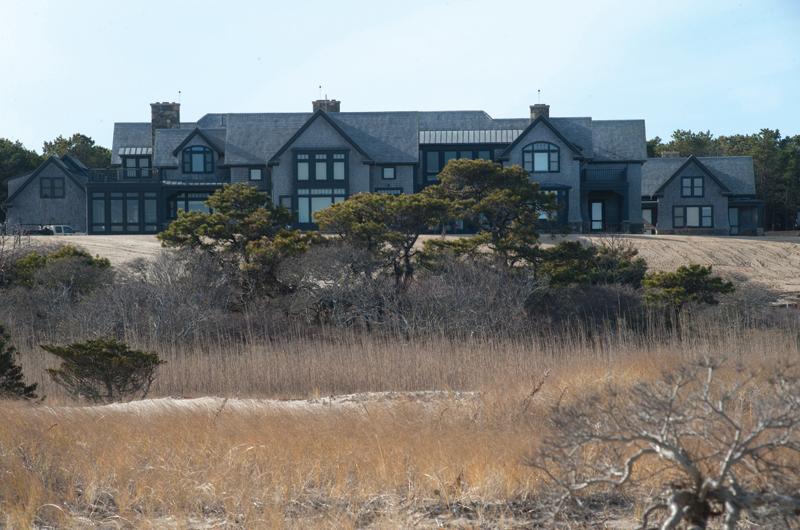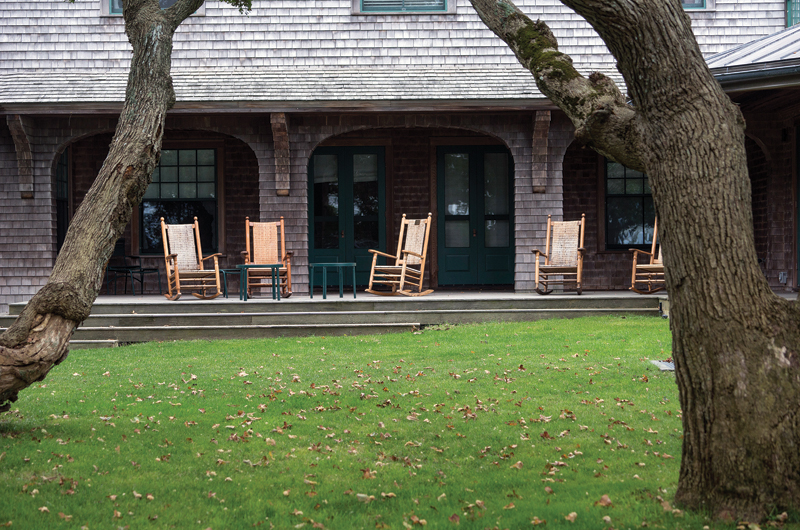Shingle Style (1880 - 1900): Rambling architectural genre popular at the end of the nineteenth century in wealthy summer resort communities, including parts of the Vineyard. The style, which evokes images of women in long white dresses enjoying lazy afternoons of croquet and lawn tennis accompanied by mustachioed men in boaters, is known for complex rooflines, large porches, numerous windows, asymmetrical façades, and, not surprisingly, shingles. Specifically, cedar shingles, and not just on the roof. In classic shingle style homes, the shingles weave around corners, up turrets, and over gables, generally with a minimal amount of trim or other decorative detailing to break up the sense of a single skin encompassing the irregularly shaped buildings.
Considered part of the Victorian family of styles, shingle style homes began appearing in summer resort communities such as Cape Cod, Newport, Long Island, Buzzards Bay, and coastal Maine around the late 1870s. The relatively free forms and asymmetric layouts were partly an expression of the newfound flexibility that building with factory-milled lumber and wire nails – a balloon frame – allowed when compared to the earlier heavy timber constructions. Compared to some other Victorian styles, such as Queen Anne, shingle style did not become semi-standardized and widely popularized across the country, but remained primarily the domain of fashionable architects such as McKim, Mead & White, working with privileged clients. A variation on the style persists as such, particularly in some of the notably large seaside homes of the past few decades: for better or worse the newer examples tend to be festooned with far more painted trim.
Though the surviving originals in many cases have matured into classics – the various shingle-style buildings of the West Chop Club are listed on the National Register of Historic Places – like some of their offspring they were not always universally appreciated. “It would be a temptation to pursue the history of architecture on the Cape further,” the noted historian of Cape Cod Henry Kittredge sniffed in the mid-twentieth century in reference to the style, “were the prospect not spoiled by the looming horrors of the Victorian epoch...high courage alone can confront undaunted these dreary examples of modern taste.”

Where to Look: East Chop, West Chop, Pease’s Point
What to Look For: Shingles, complex roof lines that often include gables and gambrels, generous porches, stone foundations, towers, arches, occasional columns
Notable Original Examples: The Cedars at the West Chop Club
Notable Contemporary Variant: The Schifter house on Chappaquiddick





